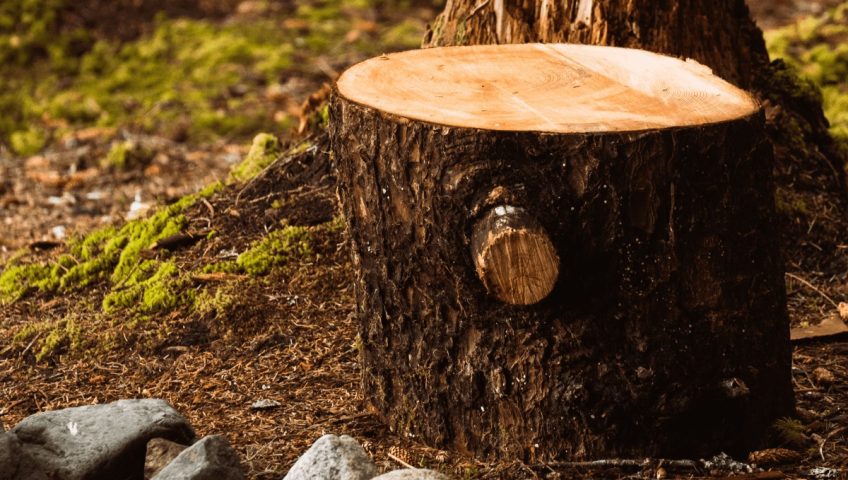While there are sources that claim tree stumps are beneficial for the environment and ecosystem, there are instances where their removal is necessary. The avoidance of pest infestations is one of them. In this article, we’re exploring why pests are attracted to tree stumps and how a tree and stump removal service can minimise the risk of an infestation.
What pests are attracted to tree stumps?
If you leave a tree stump to rot, wood-boring insects, such as beetles, woodlice and ants, may take up residence. Wasps are also known to collect wood shavings to build their nests.
Luckily, wood-boring termites aren’t endemic to the UK, like they are across the pond in the USA. Although an isolated infestation was found in Devon in 1994, which took over 20 years to eradicate! The problem with termites is that they can weaken wooden structures, posing a health and safety concern to the public.
Even without the risk of termites in the UK, other wood-boring pests could become a problem. After all, many gardens and green spaces are tranquil spaces for people to enjoy spending time. Creepy crawlies are often viewed negatively. But that’s not necessarily fair on the insects.
A more pressing argument is the risk of health to nearby plants, trees and shrubs. The pests could even spread to your property if left unchecked. From food contamination to potential structural damage from carpenter ants, there are health and safety risks to consider from an infestation.
The issue with attracting ants is that, like bees, they are social insects with a queen. That typically means one ant can quickly turn into a colony, and you’ll have an infestation on your hands.
Why are bugs attracted to tree stumps?
As tree stumps decay, they deposit nutrients in the soil. These nutrients attract ants and beetles. If the stump is in a remote location, away from property and other plant life, you can let nature do its thing. However, many tree stumps are near other trees and homes and should be removed.
It may seem mean to nature, but it’s better to encourage insects to take up residence where they’re not going to cause so much damage or disruption.
A quick remedy to help deter bugs from the tree stump includes applying treatment. However, it’s best to remove the whole tree stump and roots by contacting a professional arborist or tree surgeon.
What’s the best way to avoid an ant infestation?
As well as removing rotting tree stumps quickly and professionally, here are some other helpful tips to keep ant infestations at bay:
- Use a white vinegar solution on suspected ant trails. This prevents the ants from detecting each other’s pheromones.
- Ants don’t like wet conditions. If you find an ant nest outdoors in an inconvenient location, water the area regularly. There’s no need to drown the ants—they’ll soon relocate to drier pastures.
- It’s also believed that ants dislike strong essential oils, such as peppermint and lavender, so by applying this to vulnerable areas around your property, you could deter ants.
You’ll notice we haven’t suggested using insecticides. All these suggestions are non-toxic and offer a gentler, environmentally friendly means of preventing an ant infestation.
These measures will help, but the best way to prevent an infestation is to remove elements that would attract them in the first place—tree stumps, sugar-based products, and rotting fruit and vegetables, to name a few.
Want support with removing tree stumps?
If you’re looking for a complete tree and stump removal service, the team at N J Pacey is here to help. Our fully qualified and insured arborists will remove the stump quickly and leave your garden or green space looking neat and tidy. We especially recommend getting tree stumps removed in the spring, around April, as that is prime activity time for ants.
